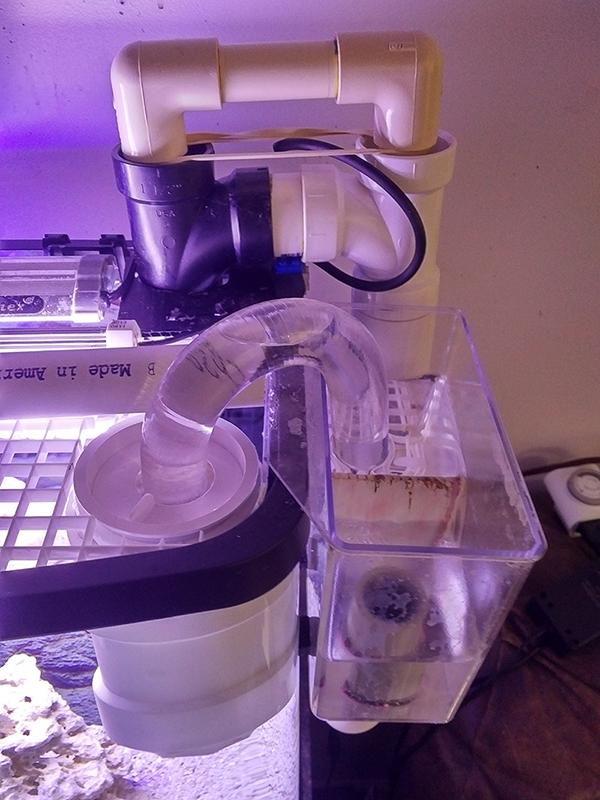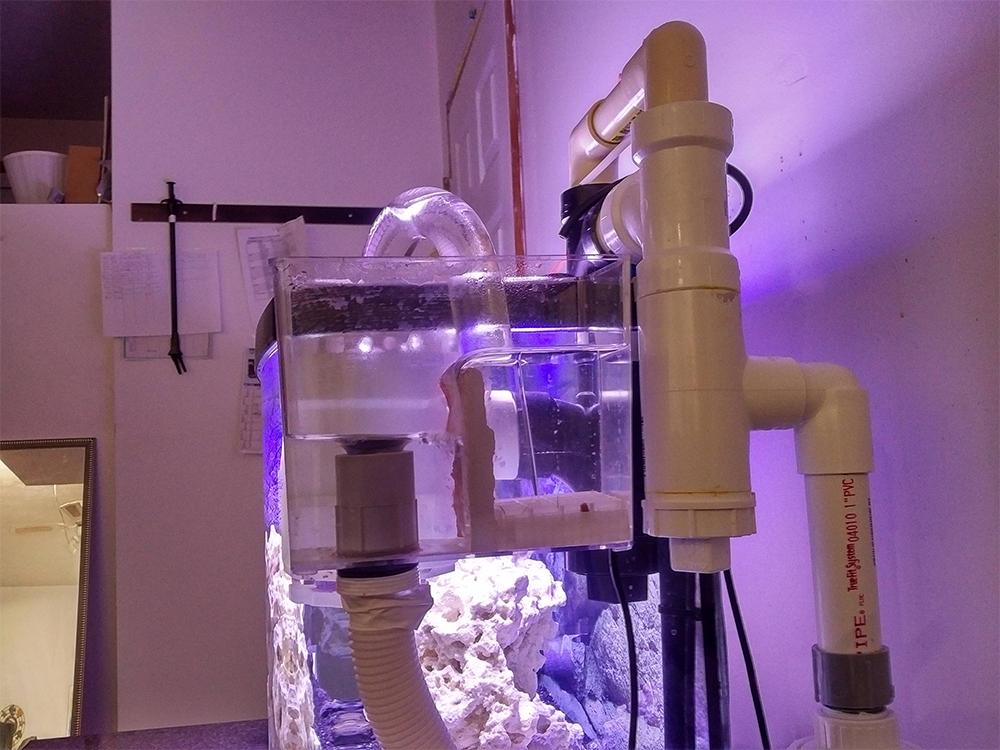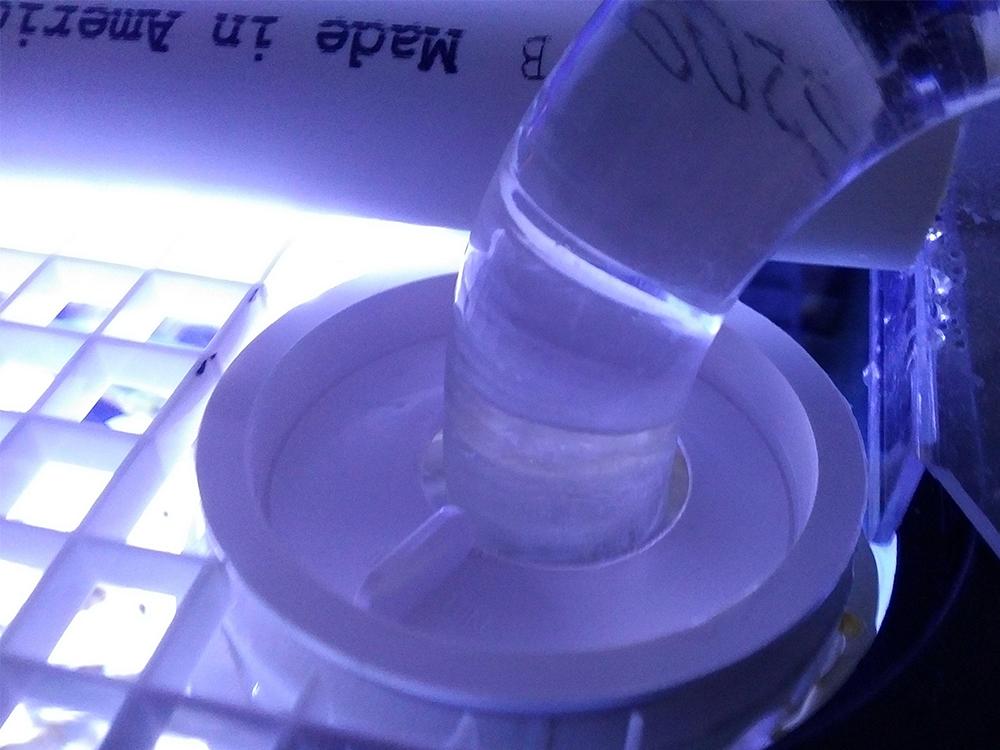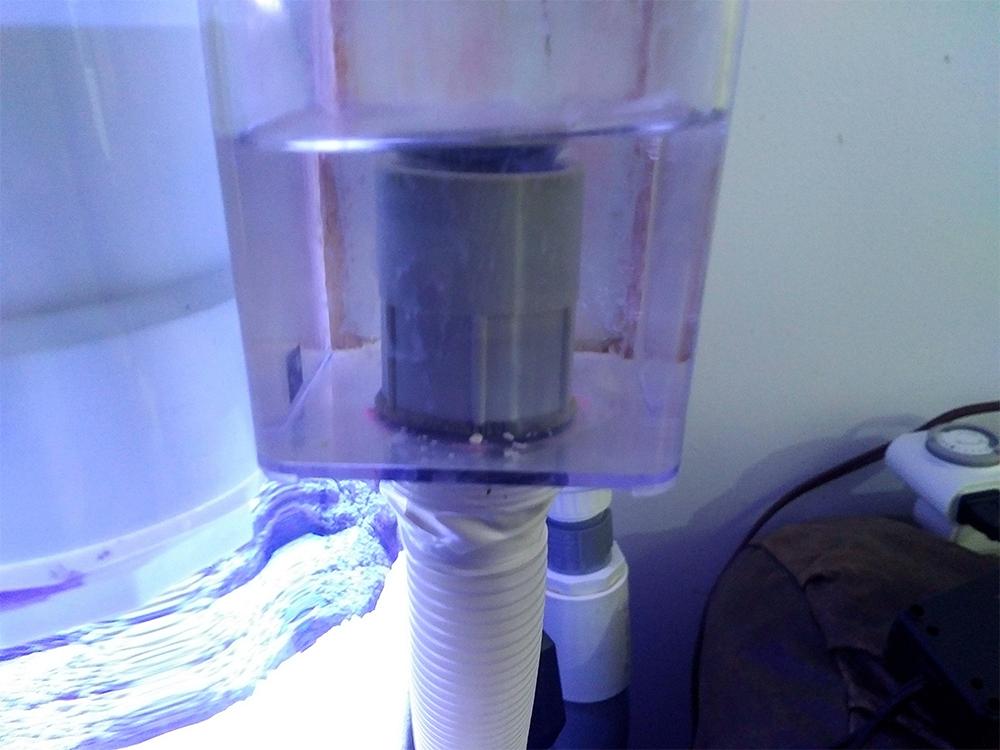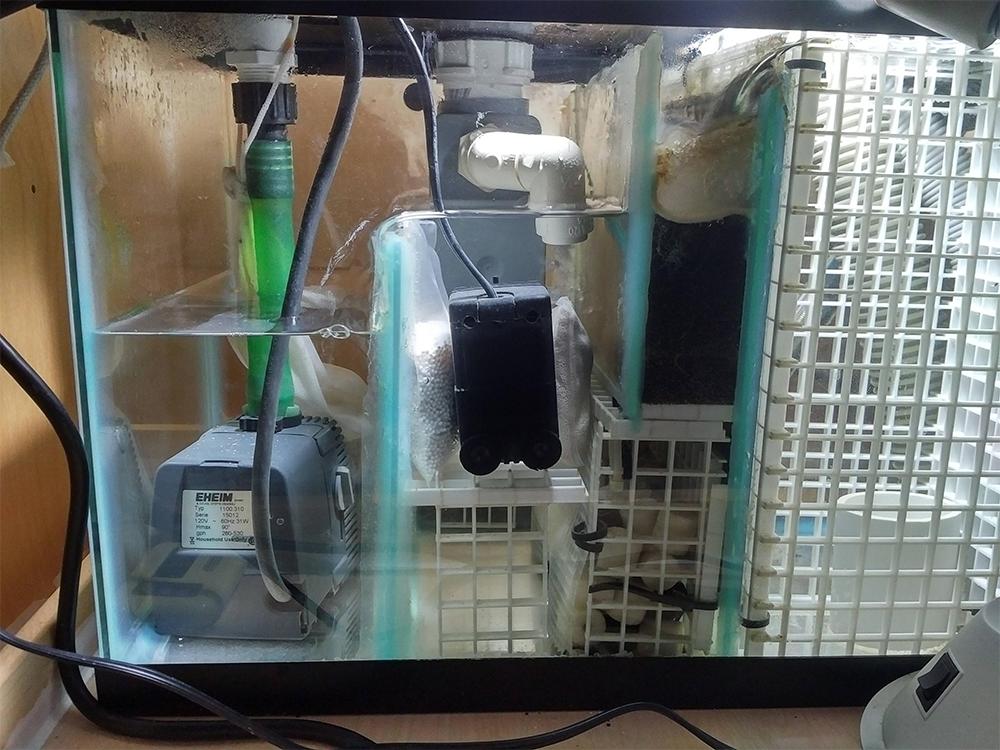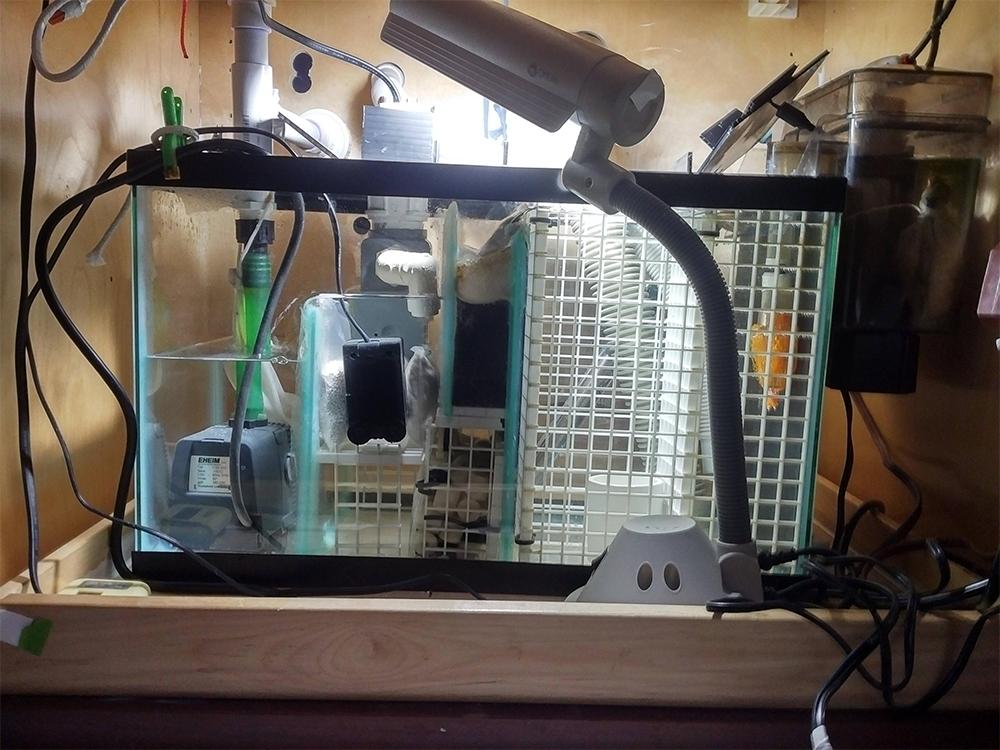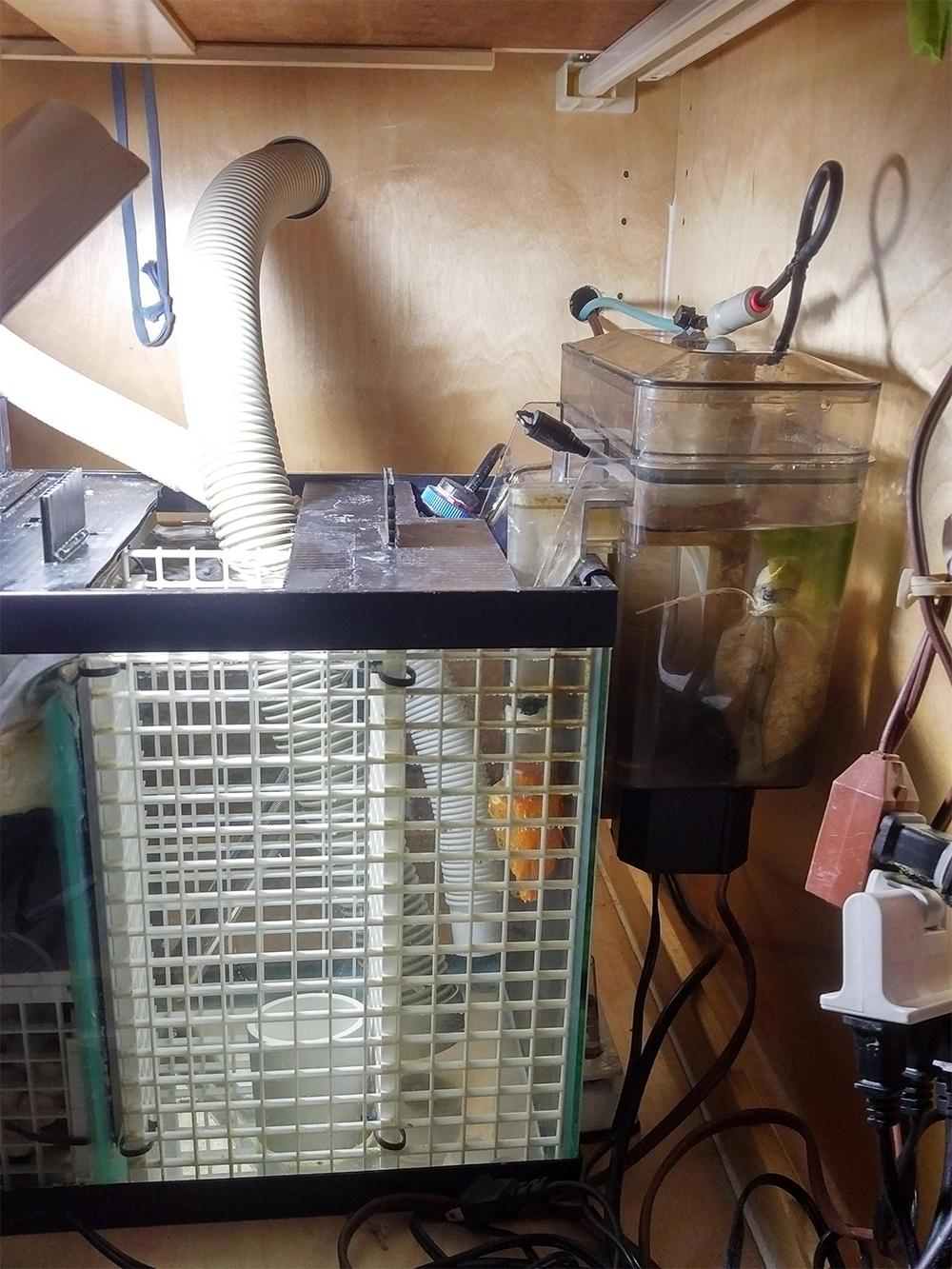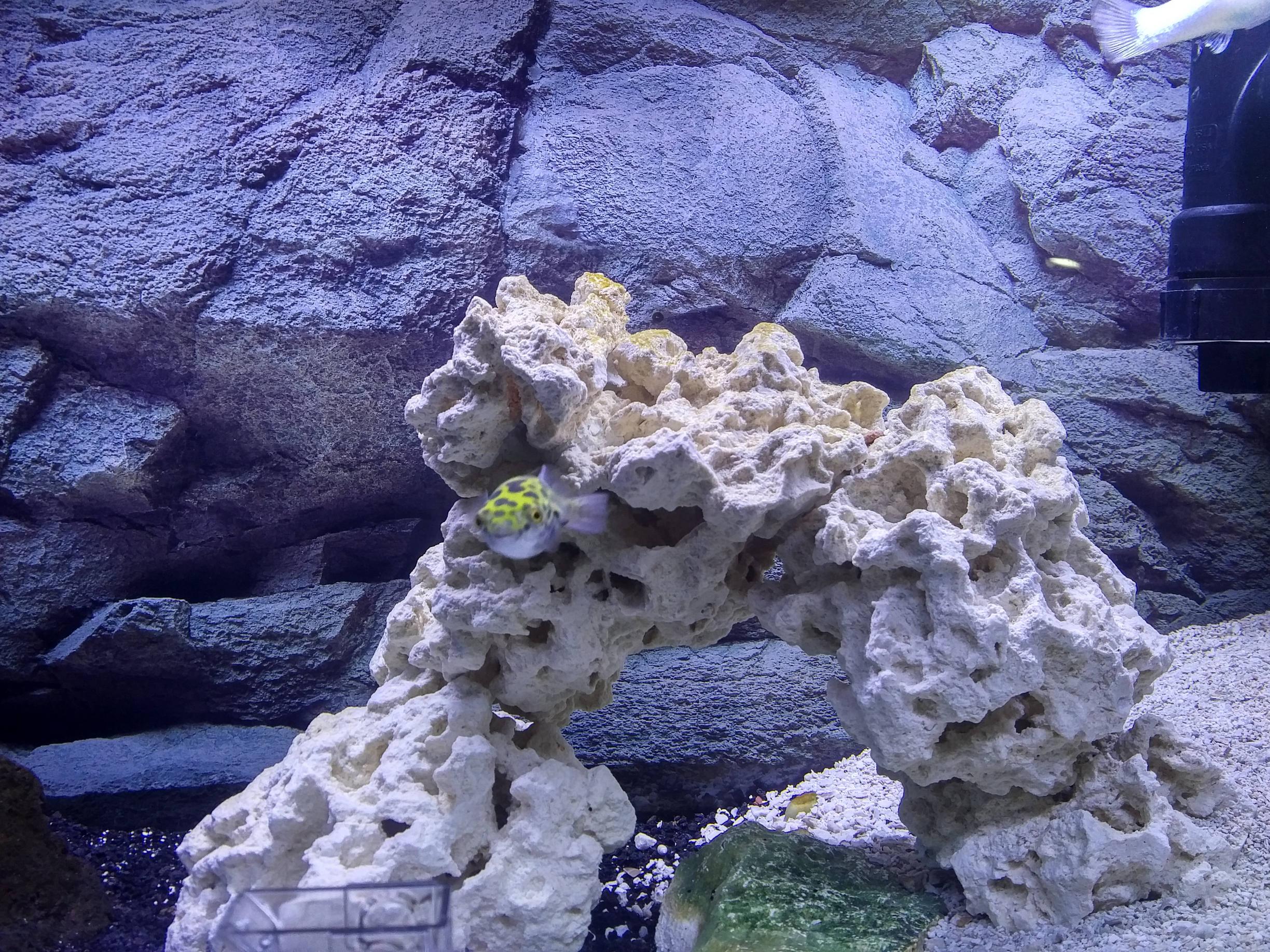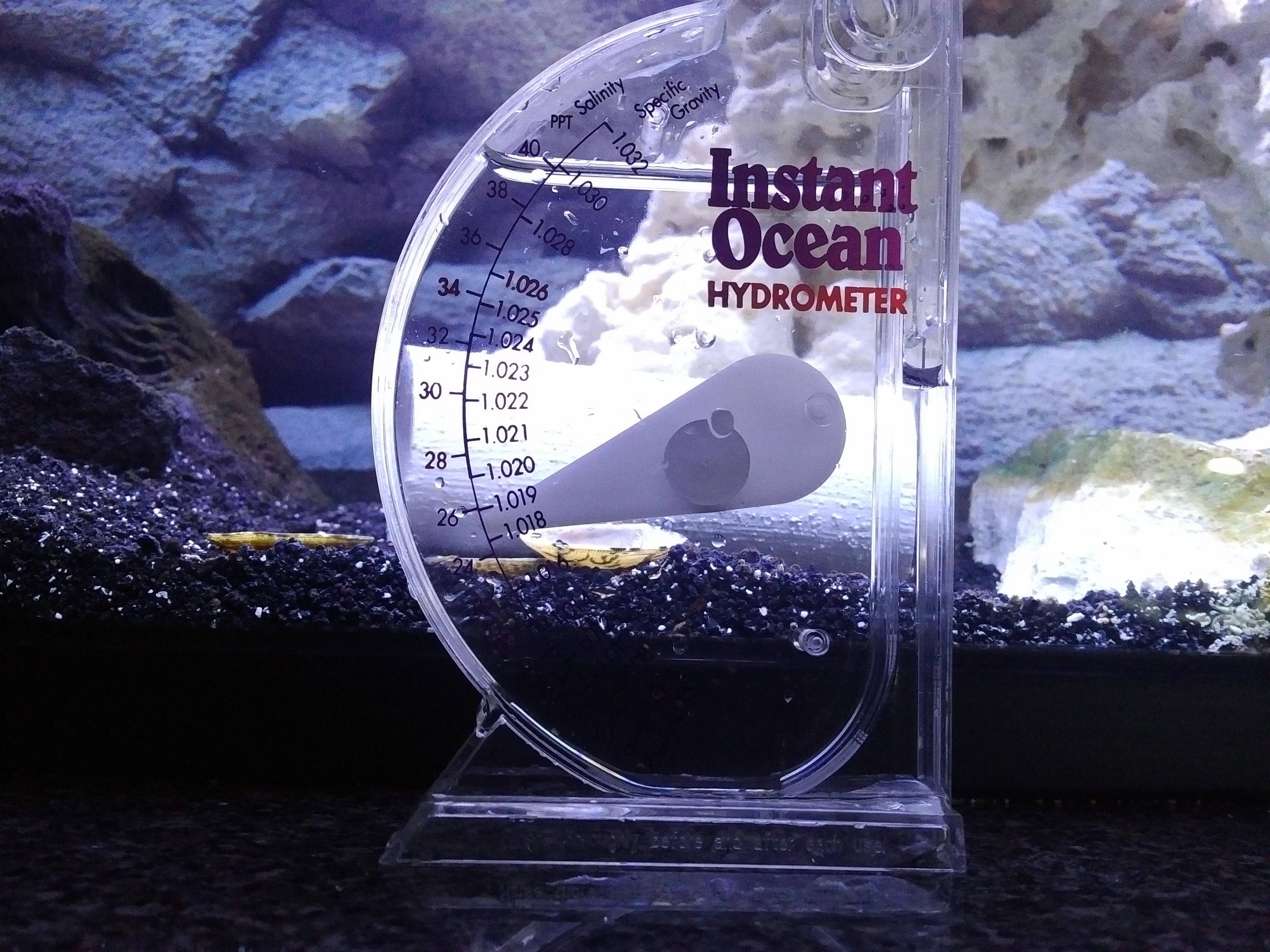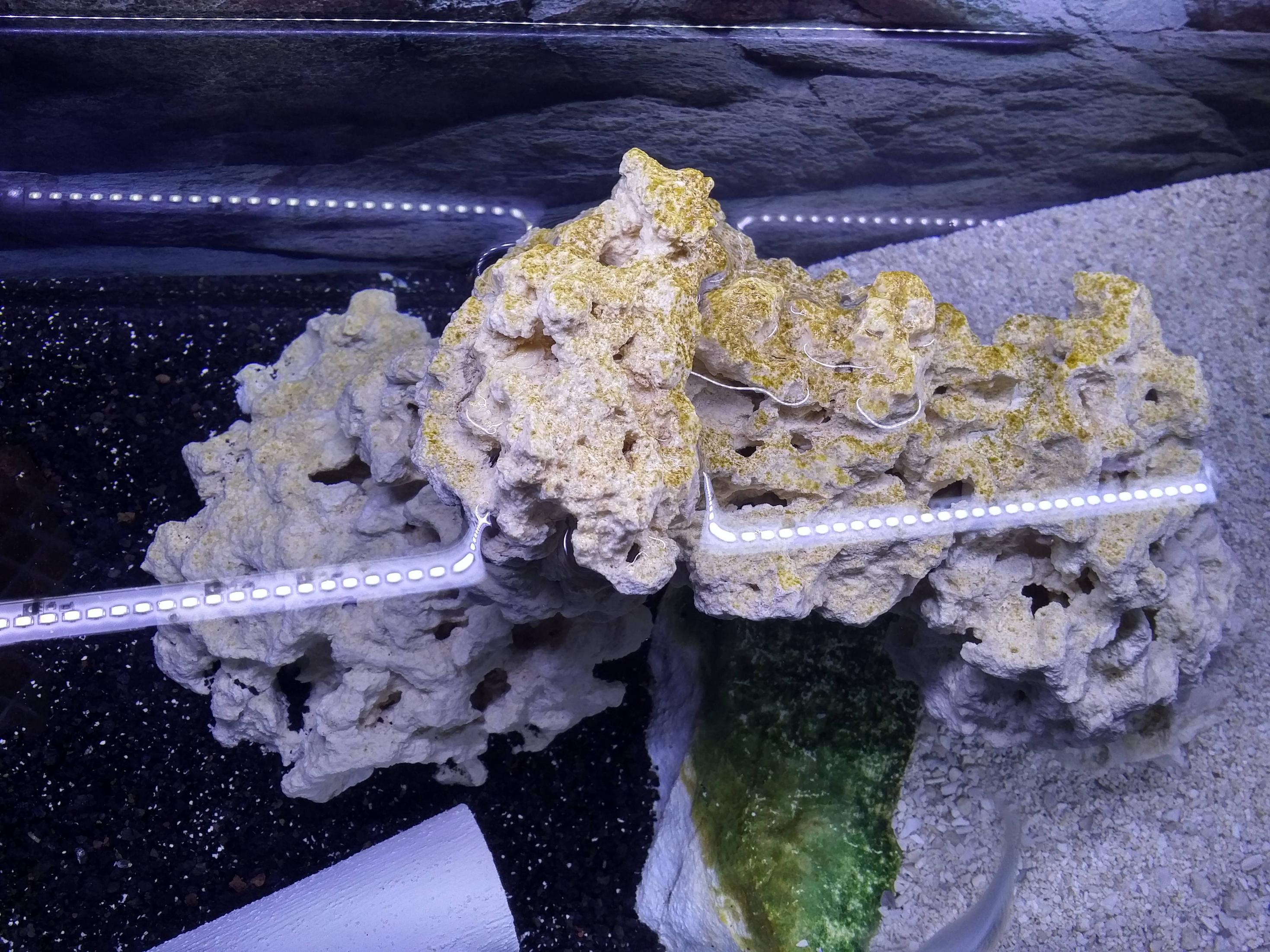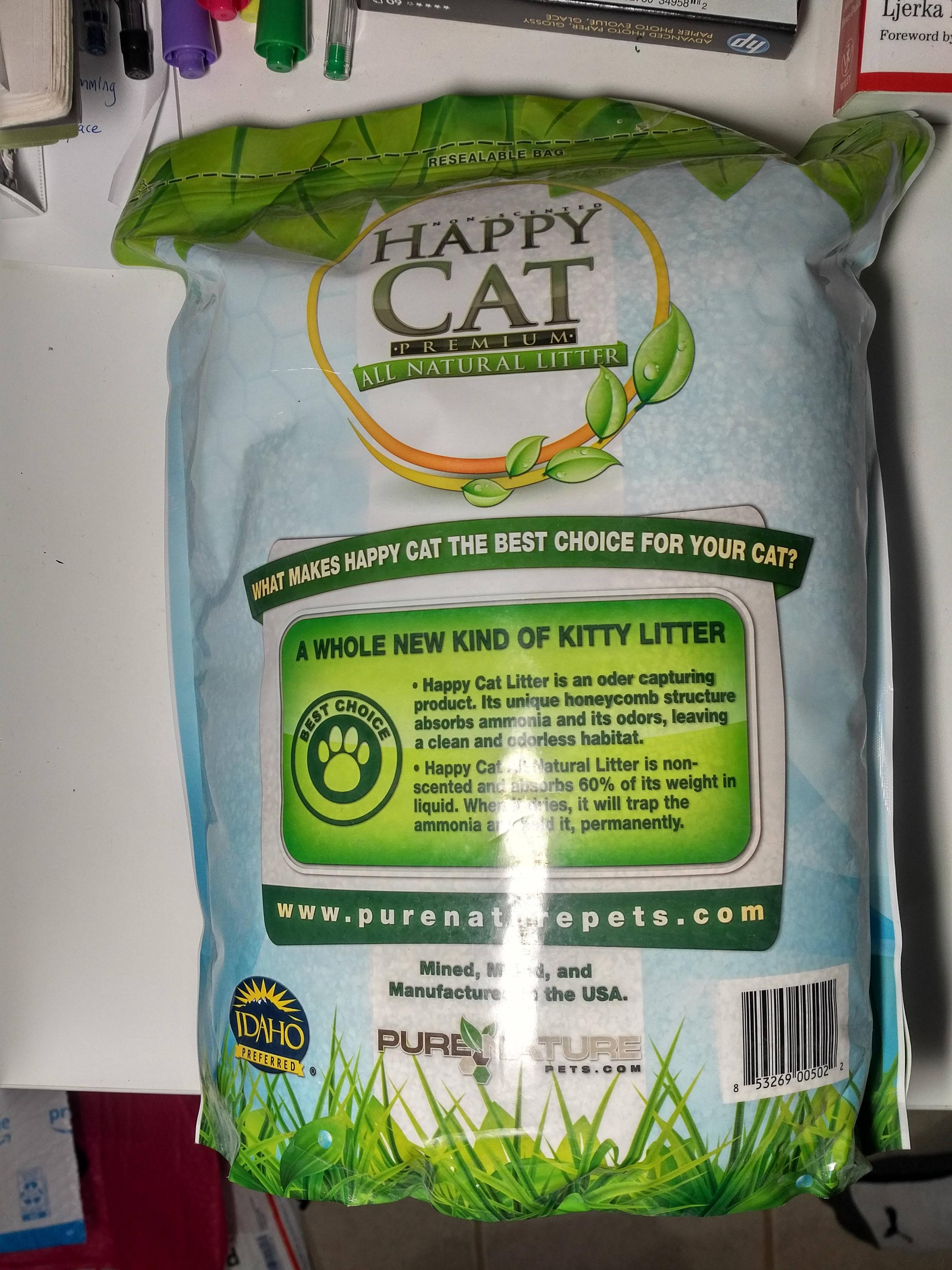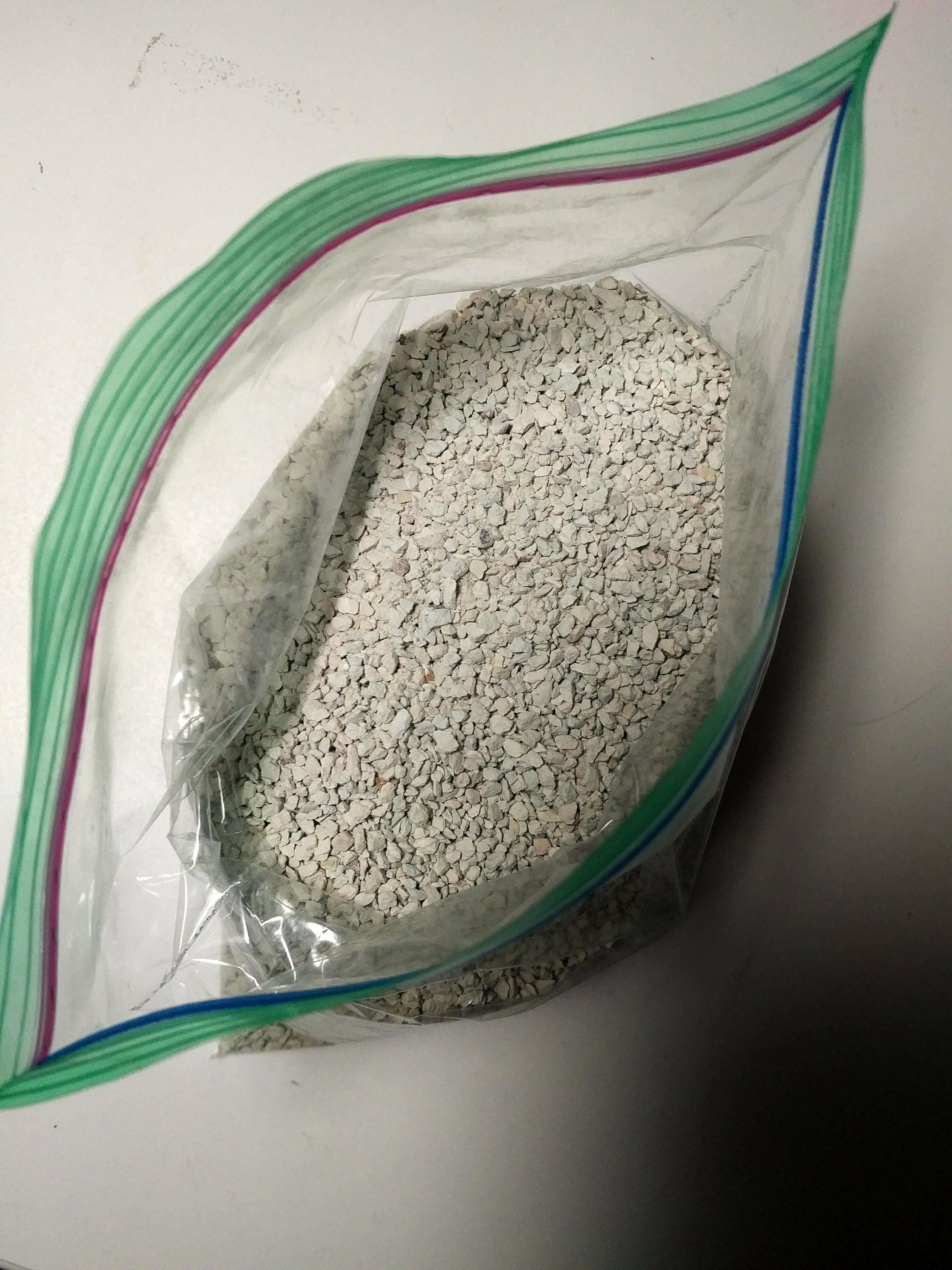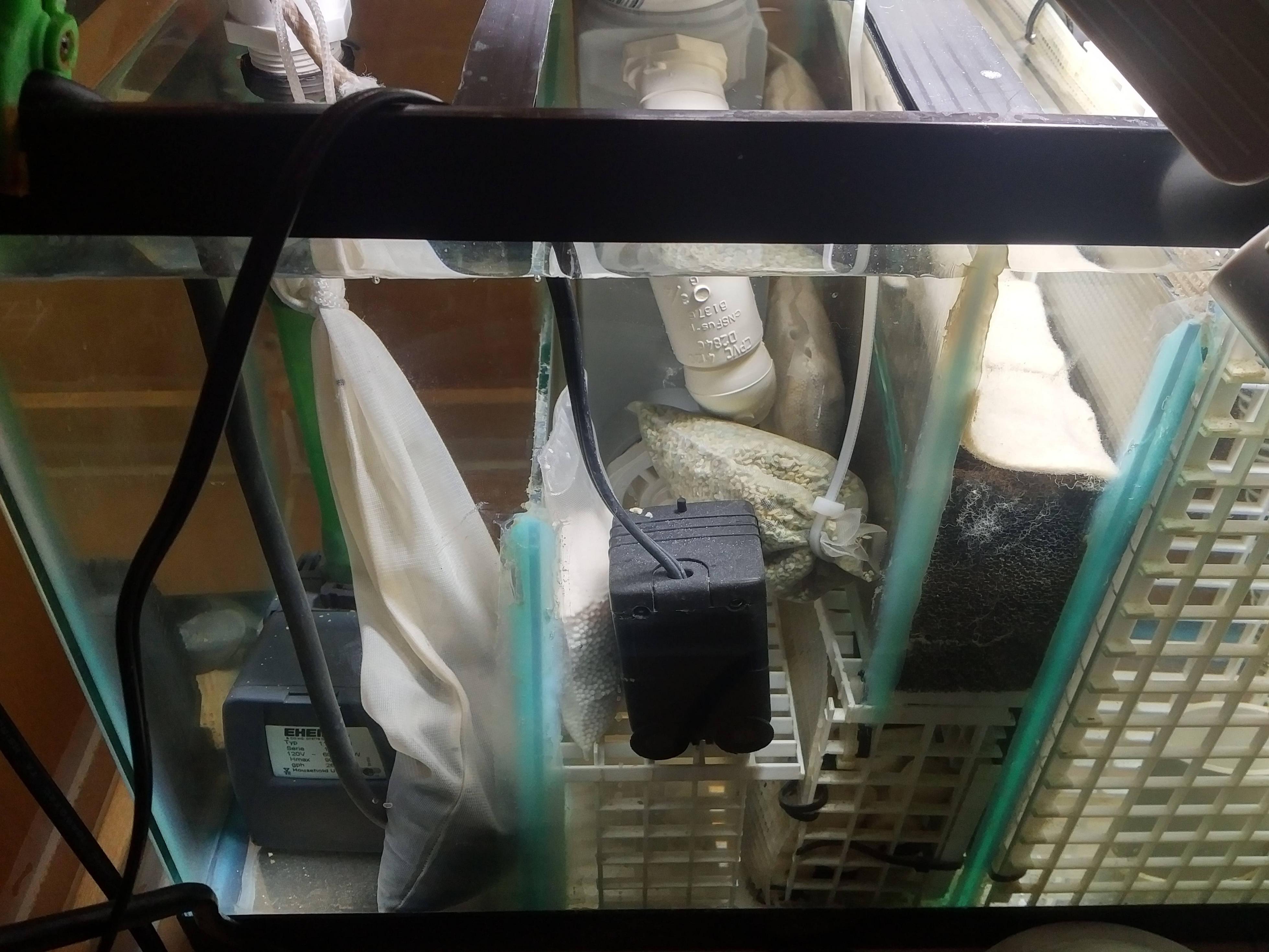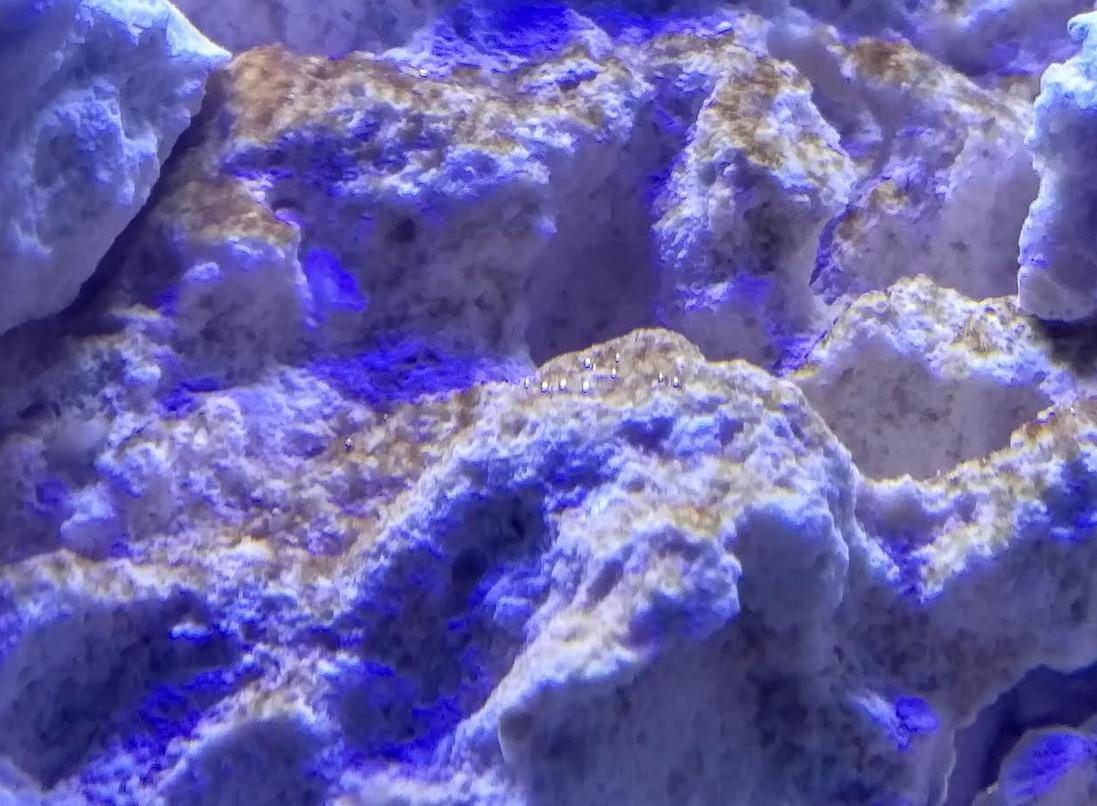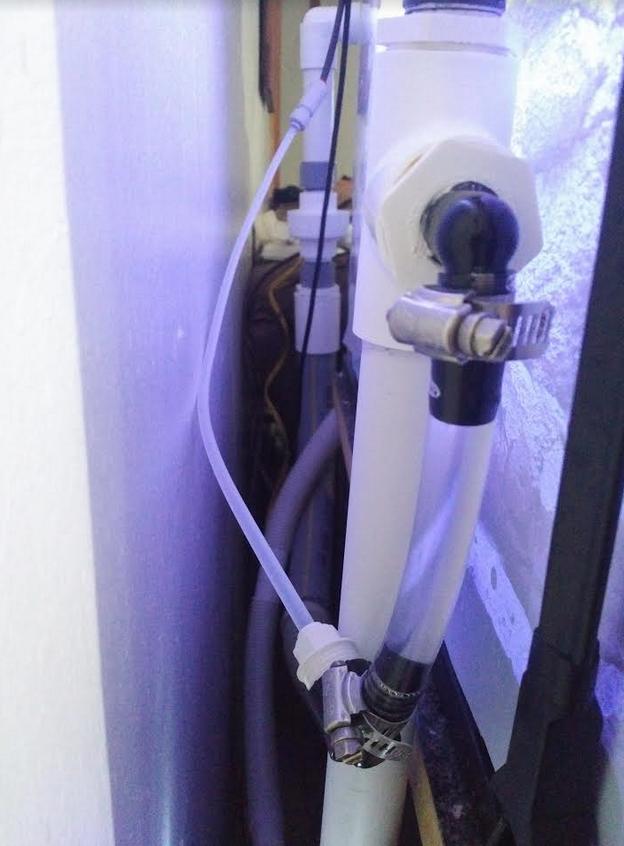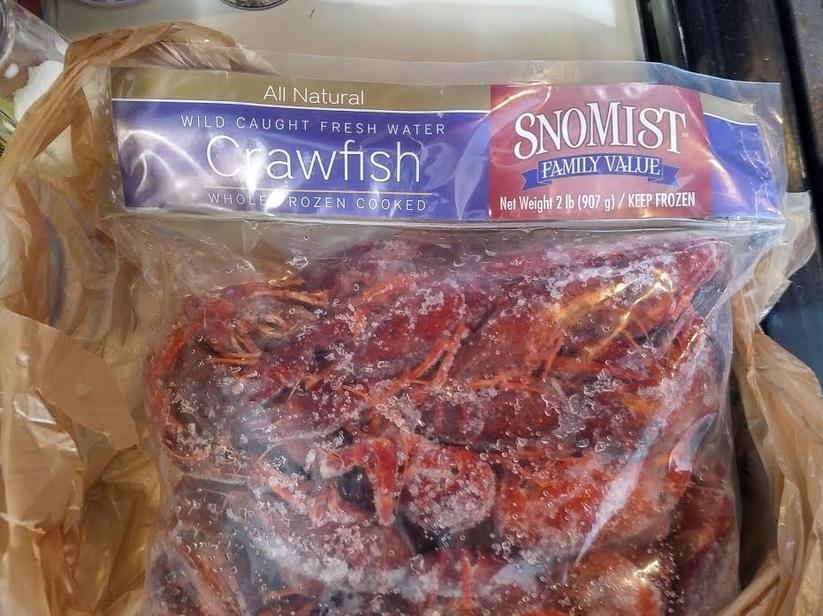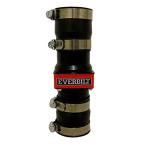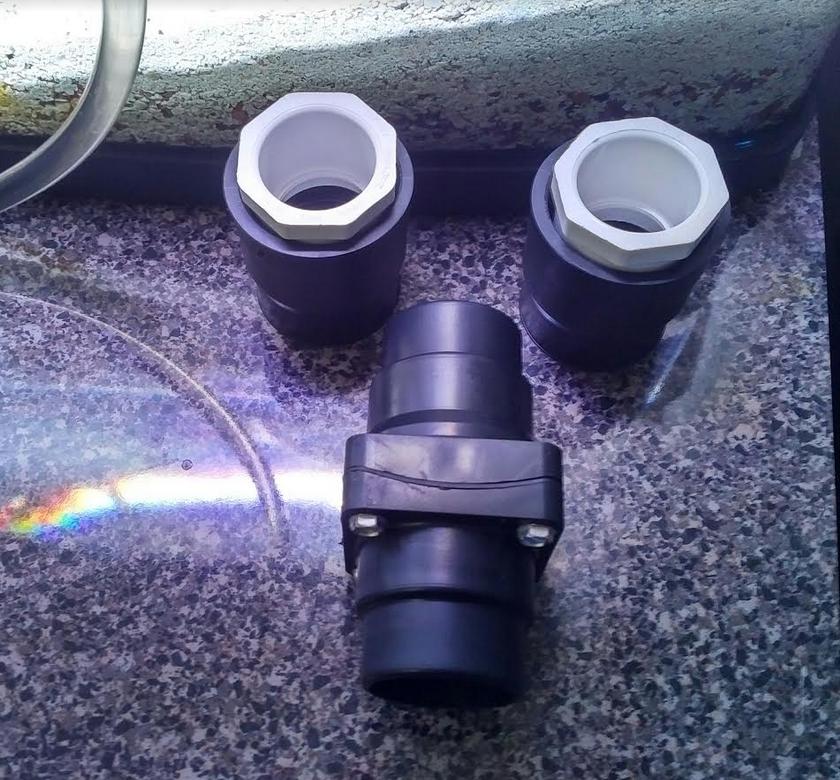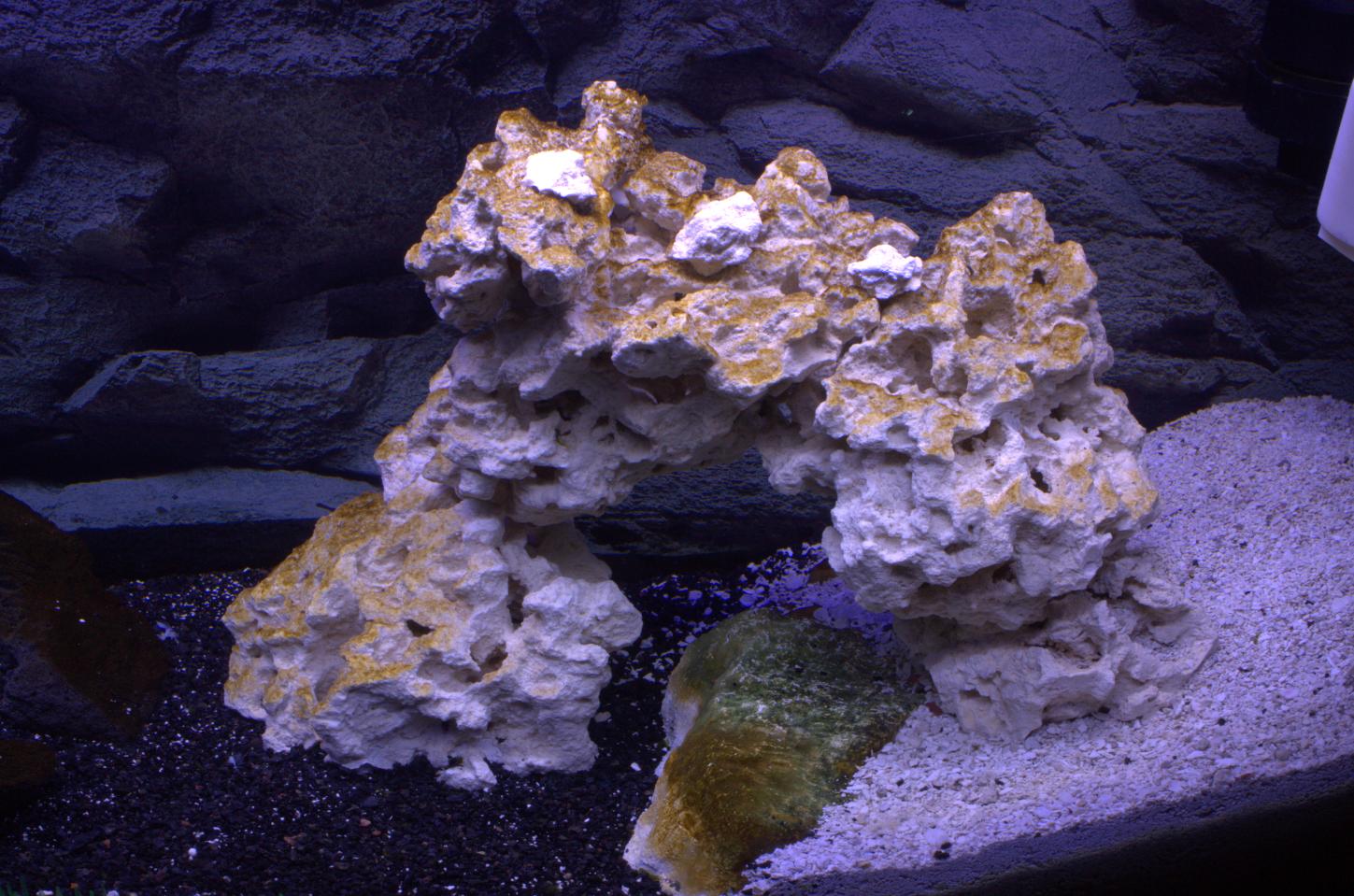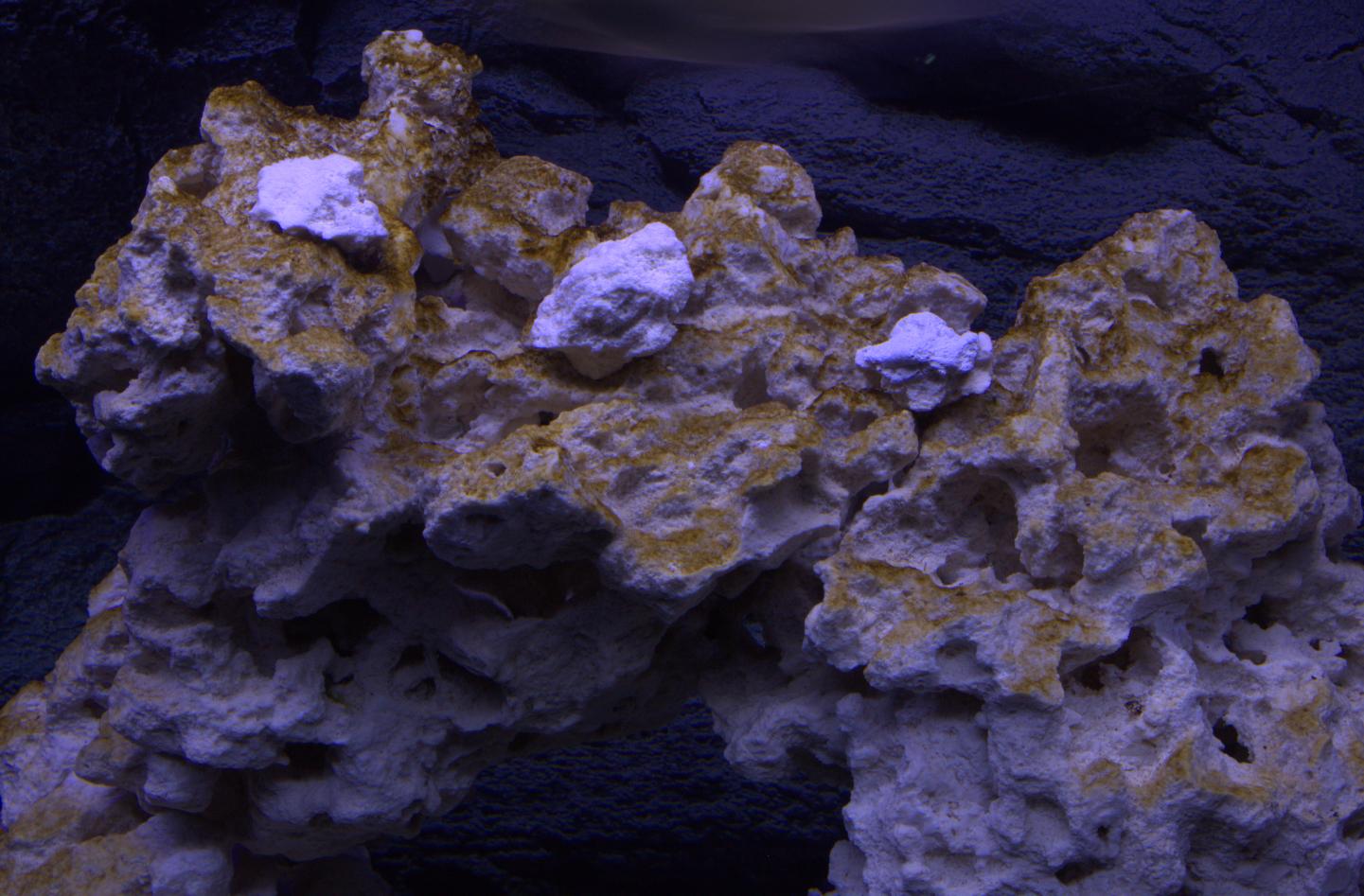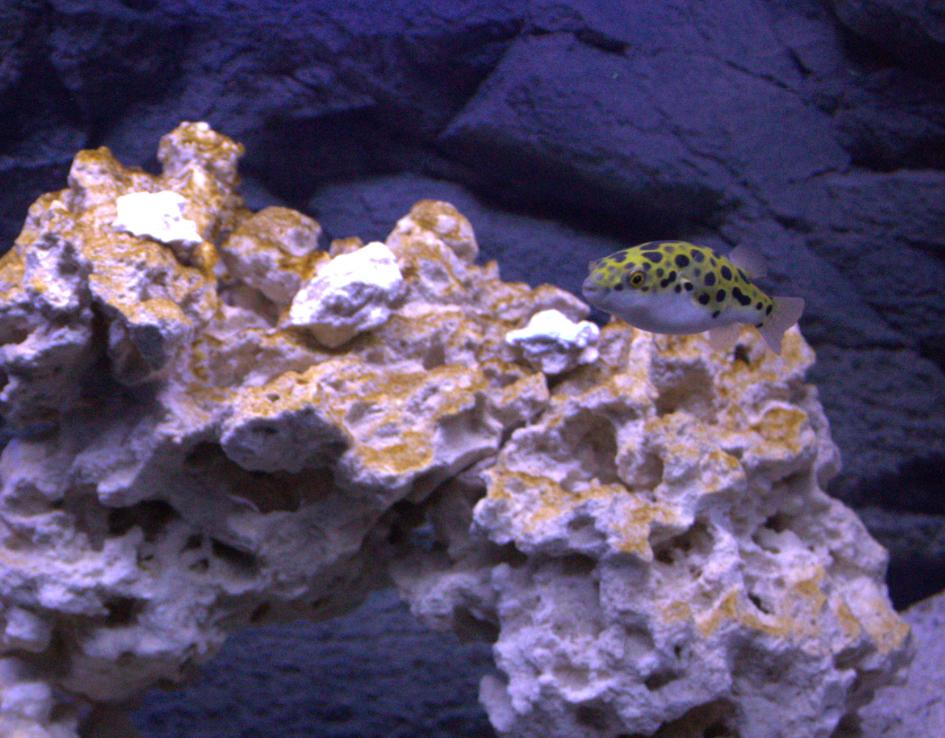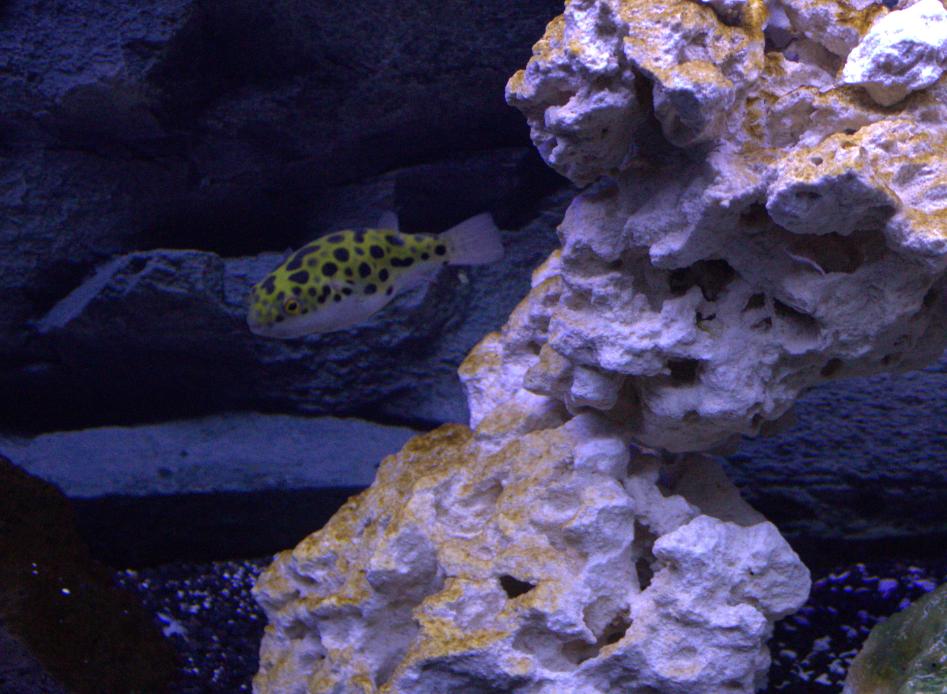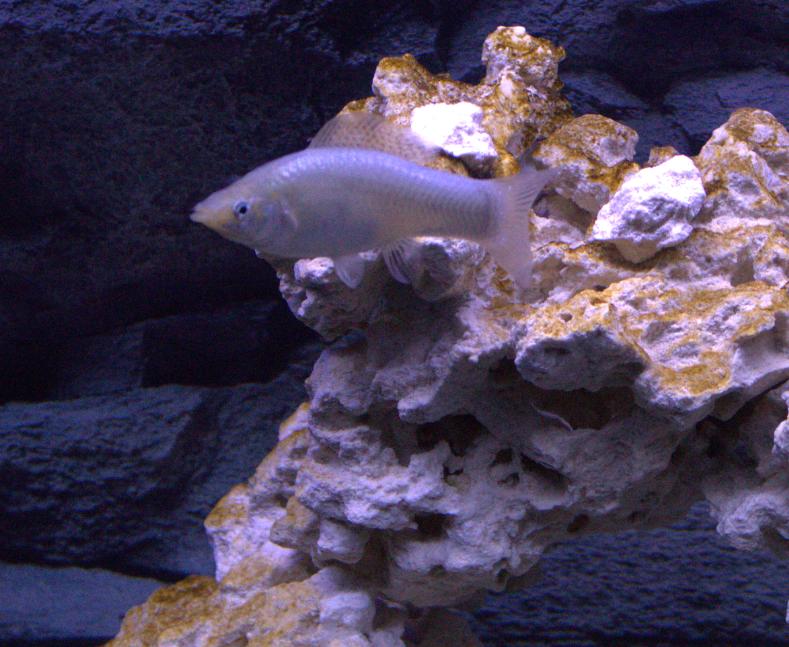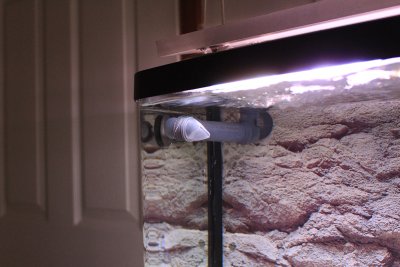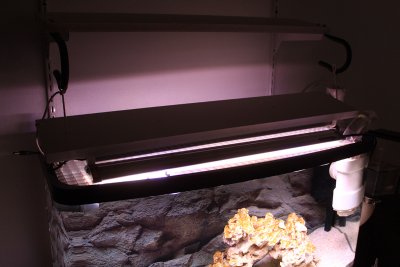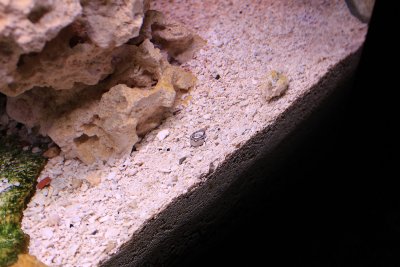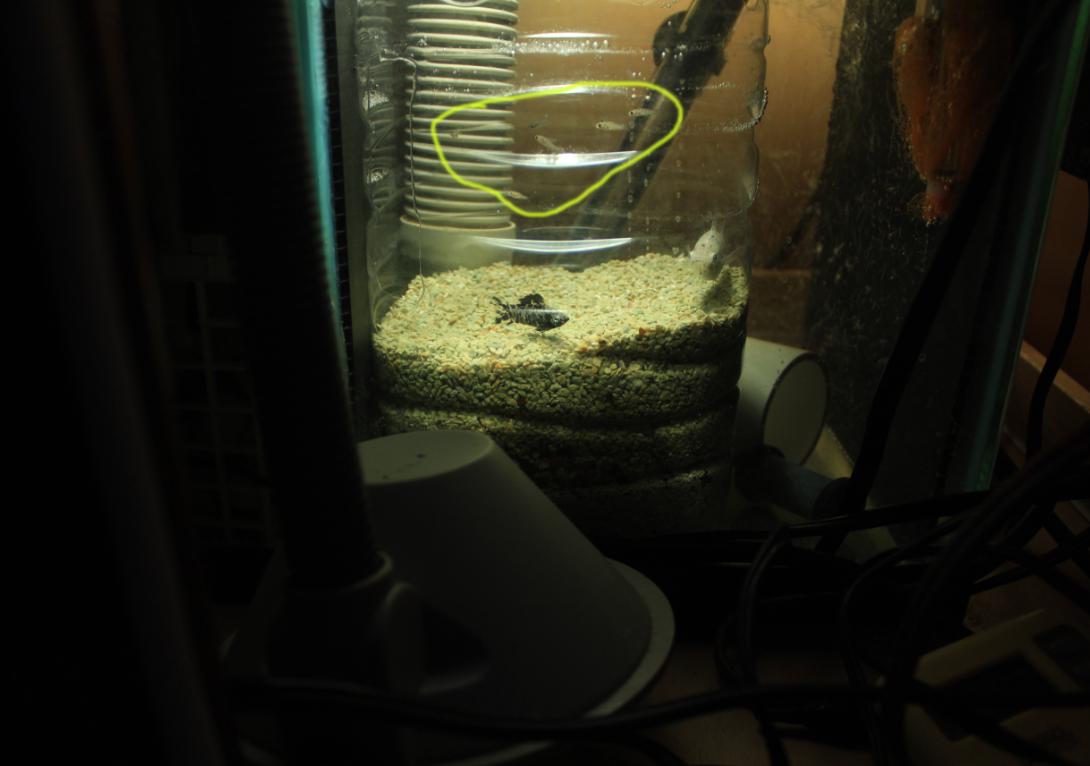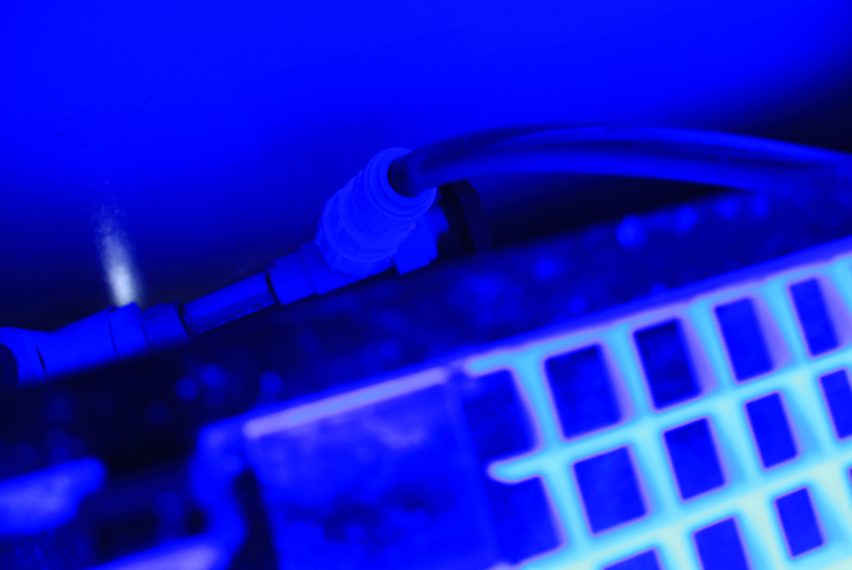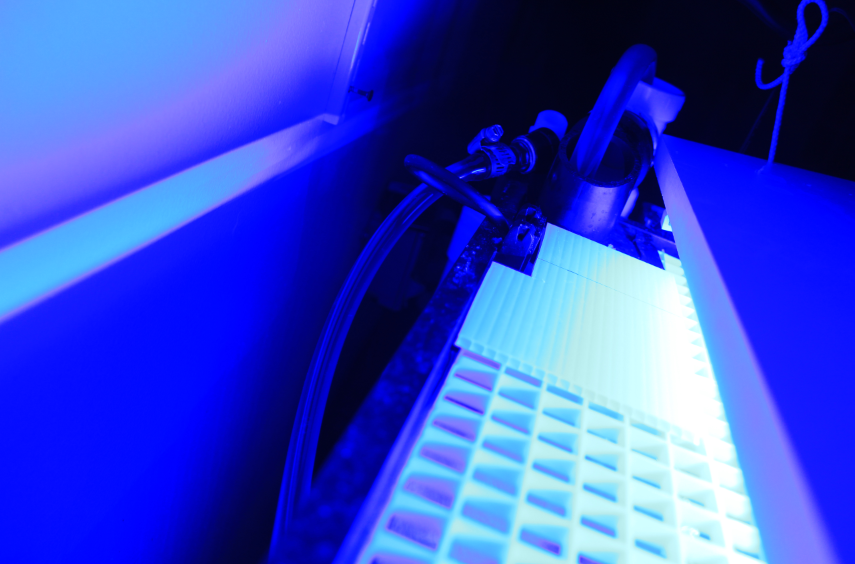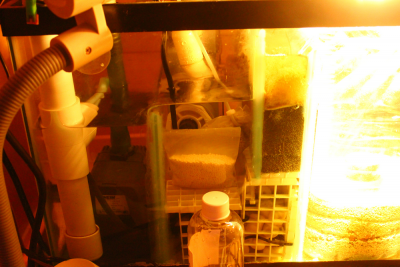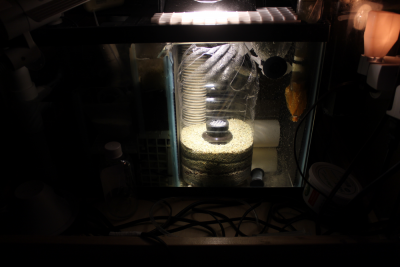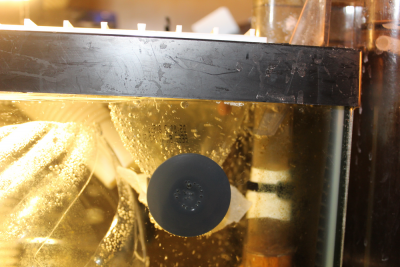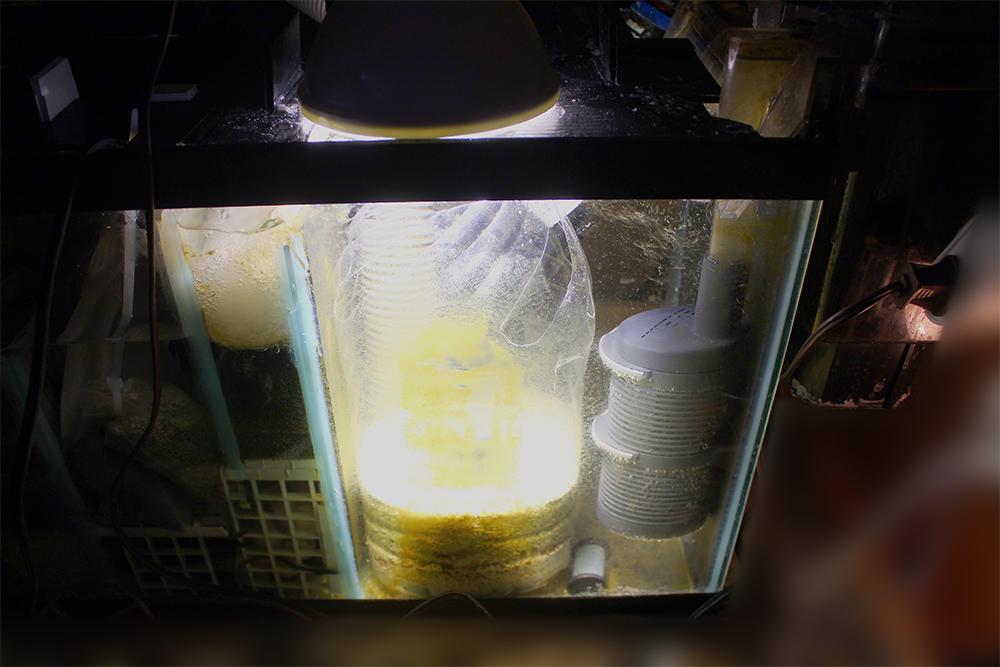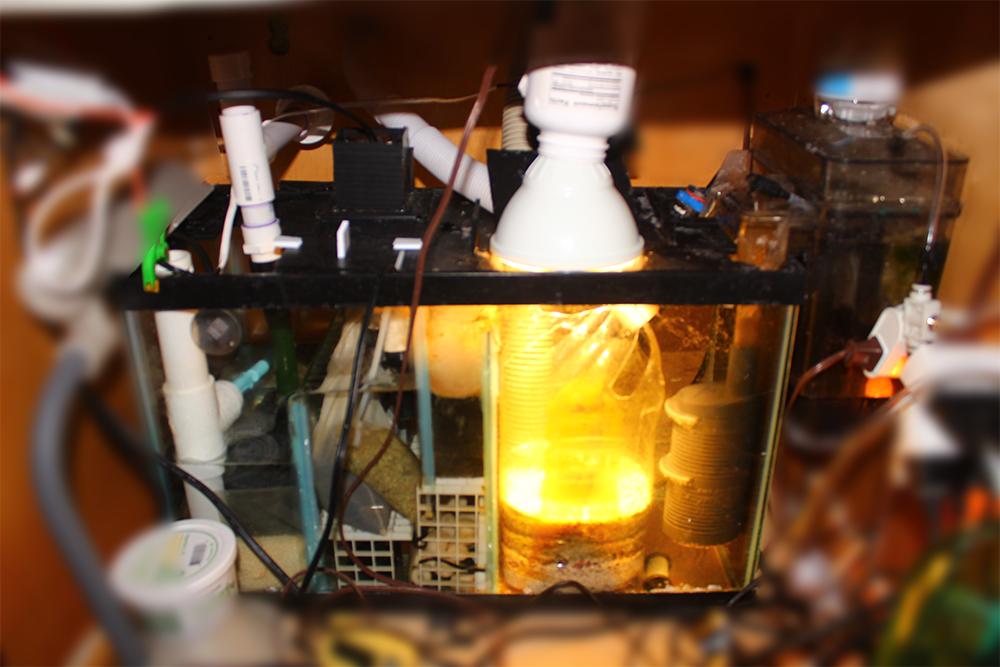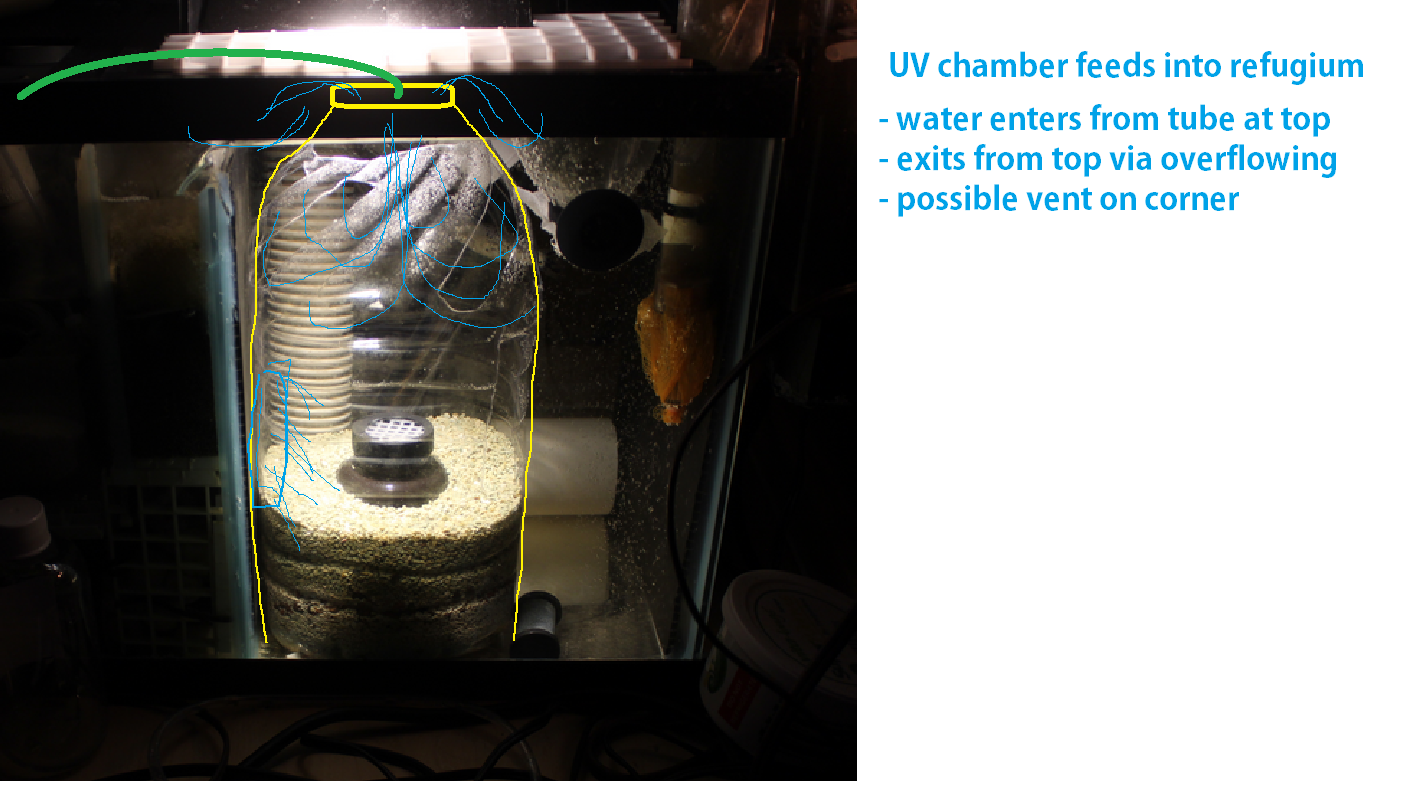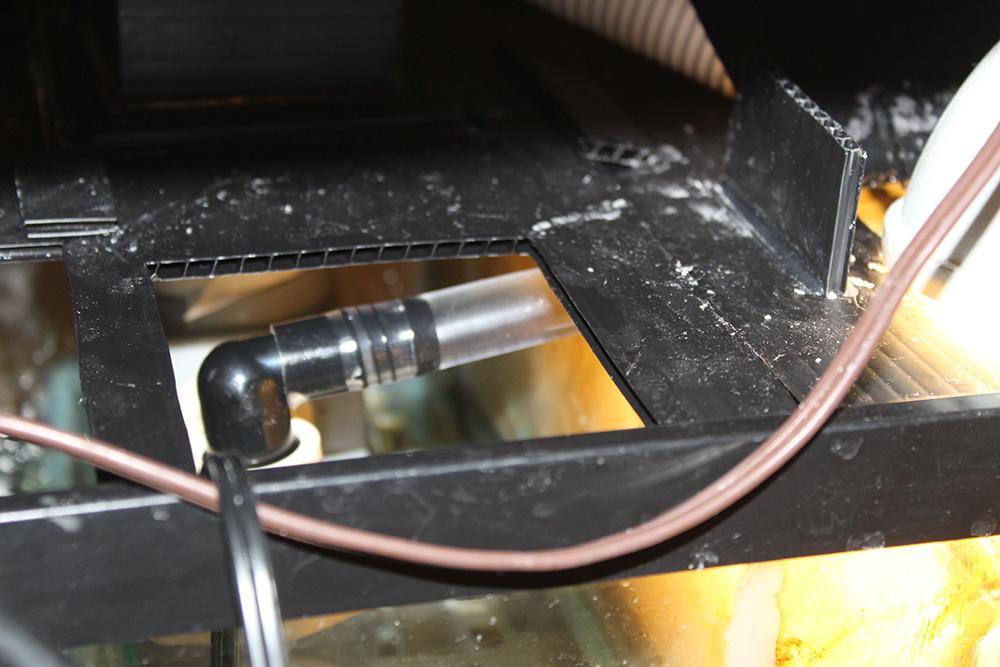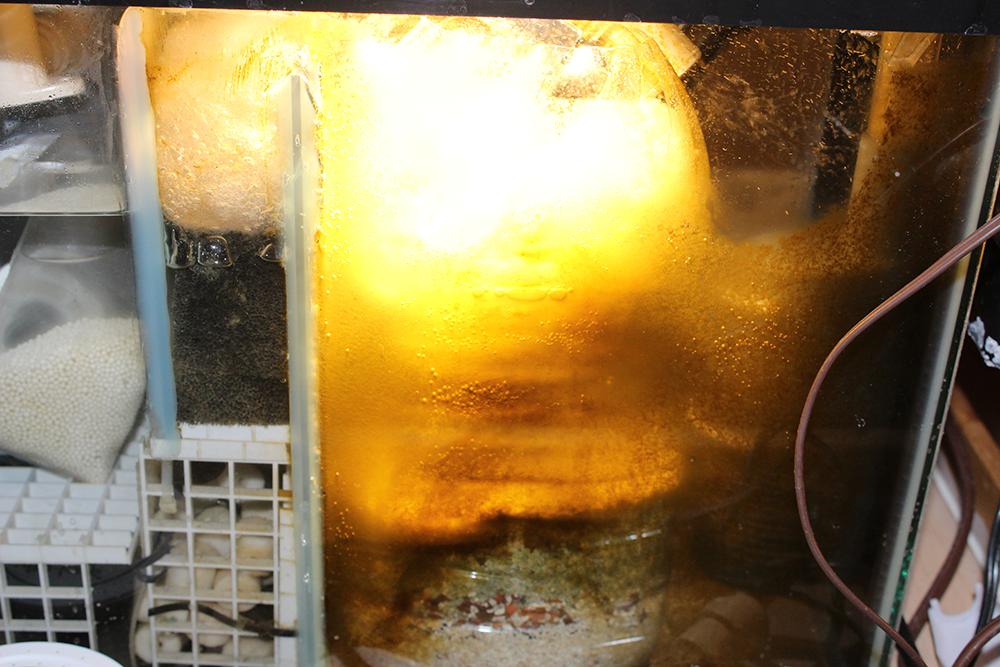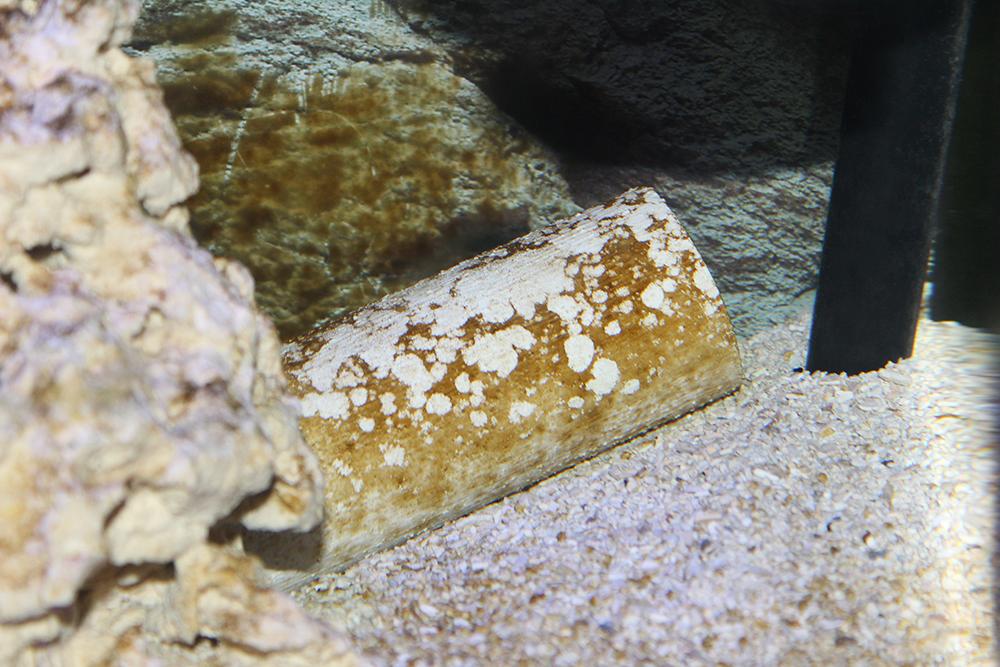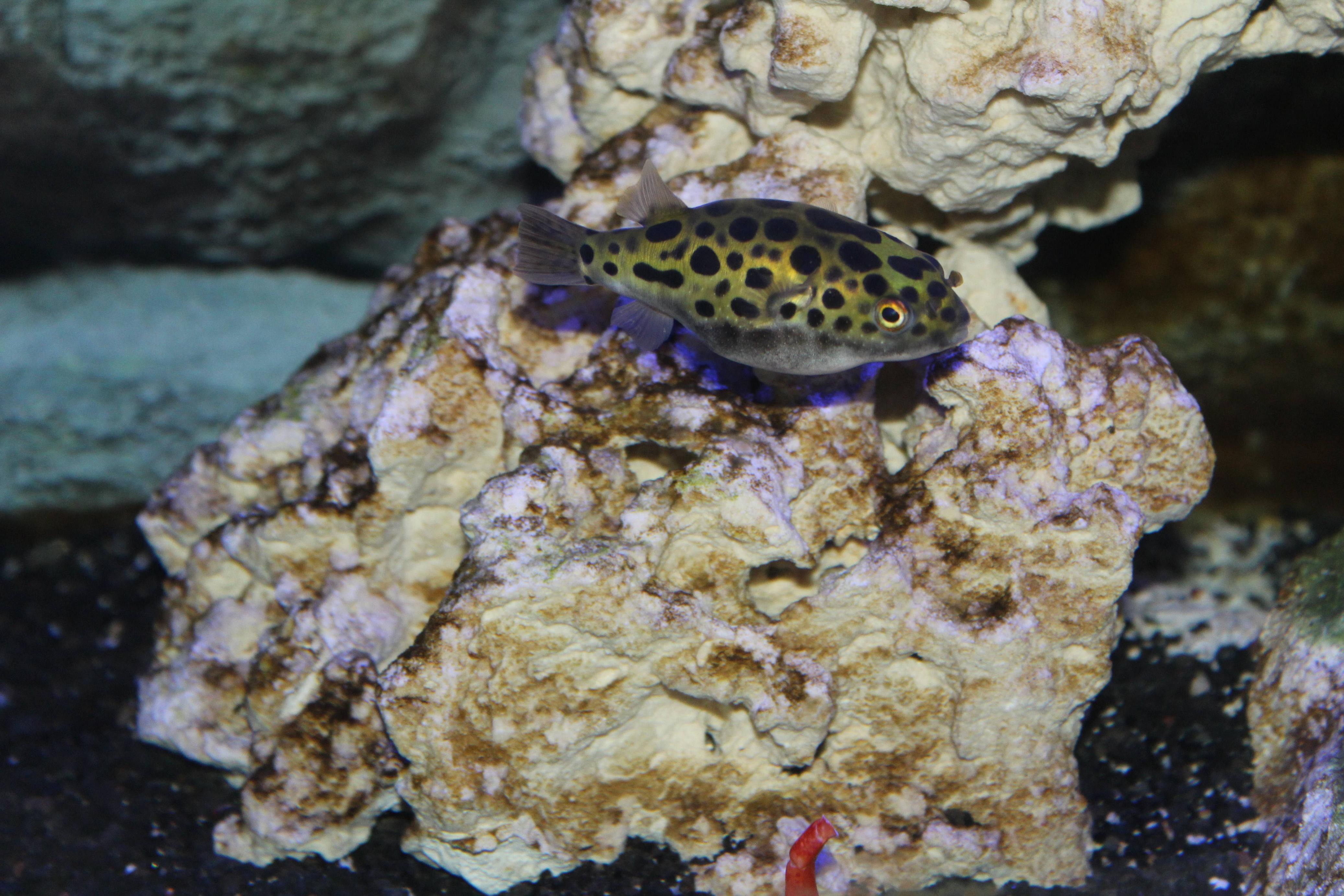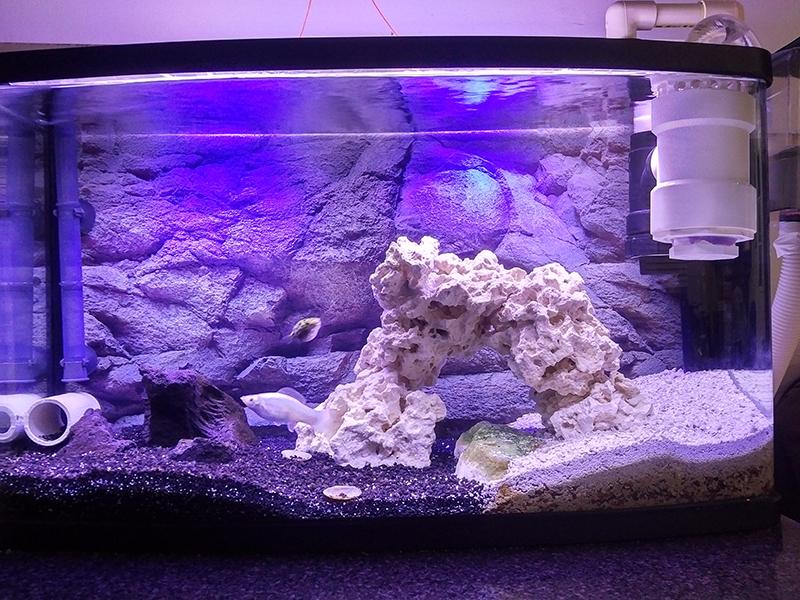
Hi R2R,
I'm documenting the conversion of my 23gal Vista (mid brackish) to FOWLR with the plan of growing Coralline algae (moving it into the reef space). I've had the tank for about 2.5 years now at various FW to low end brackish salinities... The biggest reasons I am turning the tank into marine,
- I want to set the tank up for a Green Spotted Puffer...
- Plants are a huge struggle in brackish
- I already do enough DIY that the brackish tank was over halfway to being a marine setup anyway
- FW and brackish has gotten boring
Tank: Fluval Vista 23 gal:
- Egg crate lid
- DIY Overflows w/ Siphon Tubes; plumbed herbie style
- 10 Gal DIY sump
Substrate:
arag-alive hawaiian black for the left side (1" depth)
arag-alive Natural Reef on the RUGF side
Rock:
10lbs of Caribsea dry rock
+ some black lava rock
large rock painted with drylok basement waterproofer
Lighting:
24" Current TruLumen Pro LED Actinic strip 16watt
24" Current TruLumen Pro LED 12k/Actinic fusion strip 16watt
24" Current TruLumen Pro LED strip 12K (not running) 16watt
Finnex Fugeray 24" switched for "moonlight" 8 blue leds
Sump:
- Skilter 250 modified w/ reduced flow and a limewood airstone
- 500ml Seachem Purigen in Skilter
- Chaeto container + 3000K light
- DIY UV sterilizer (13watt w/ ~60 gph pump)
- Filter floss + bio sponge + bio media
- Cuprisorb + intermittent activated carbon
- Eheim compact+ 2000 return pump (at 100% flow rate, probably 350gph)
Anyways, if you got this far, thanks for reading... if you skipped down, thanks for clicking and if you have any tips advice or comments TIA
Last edited:


